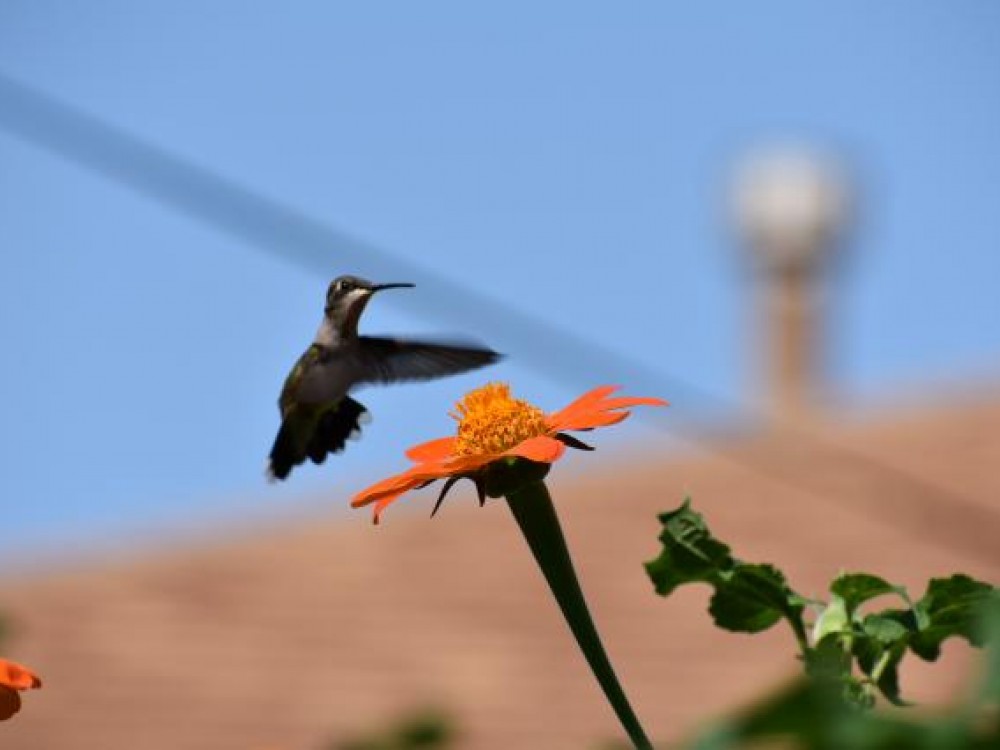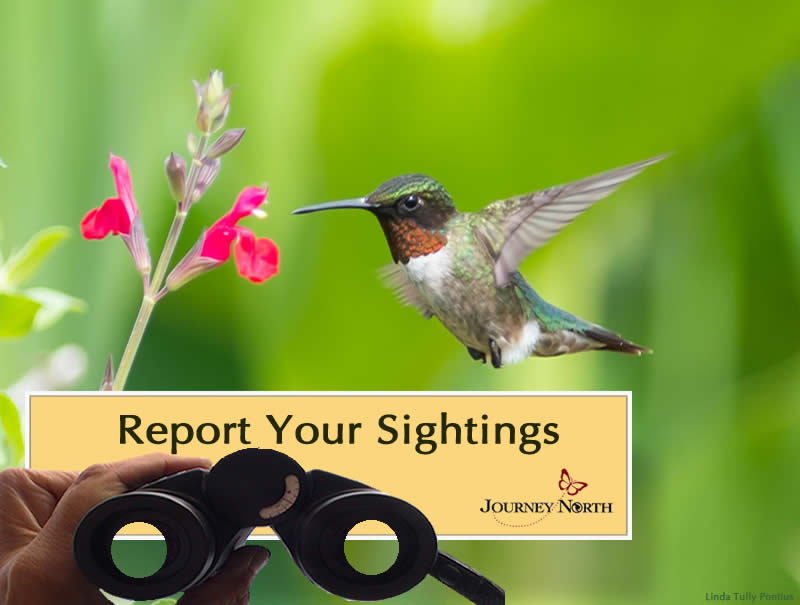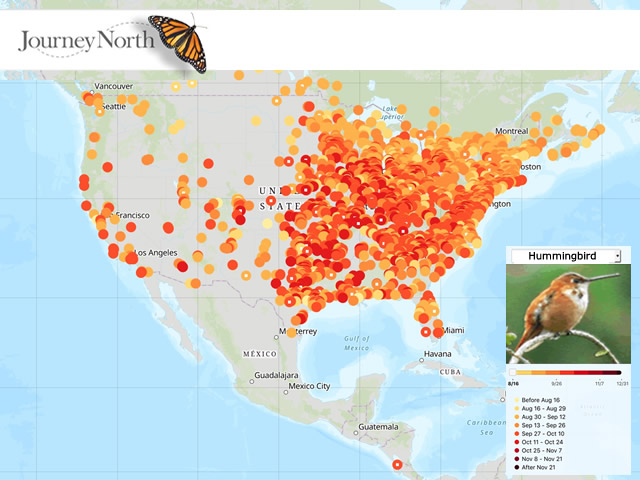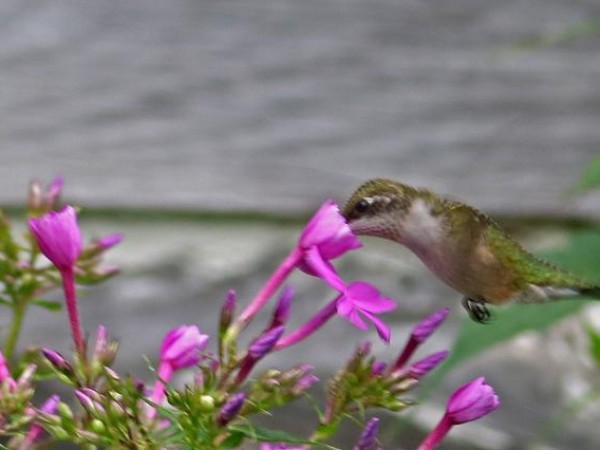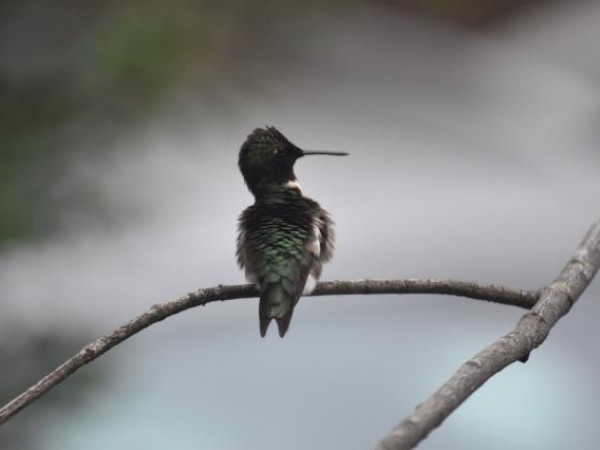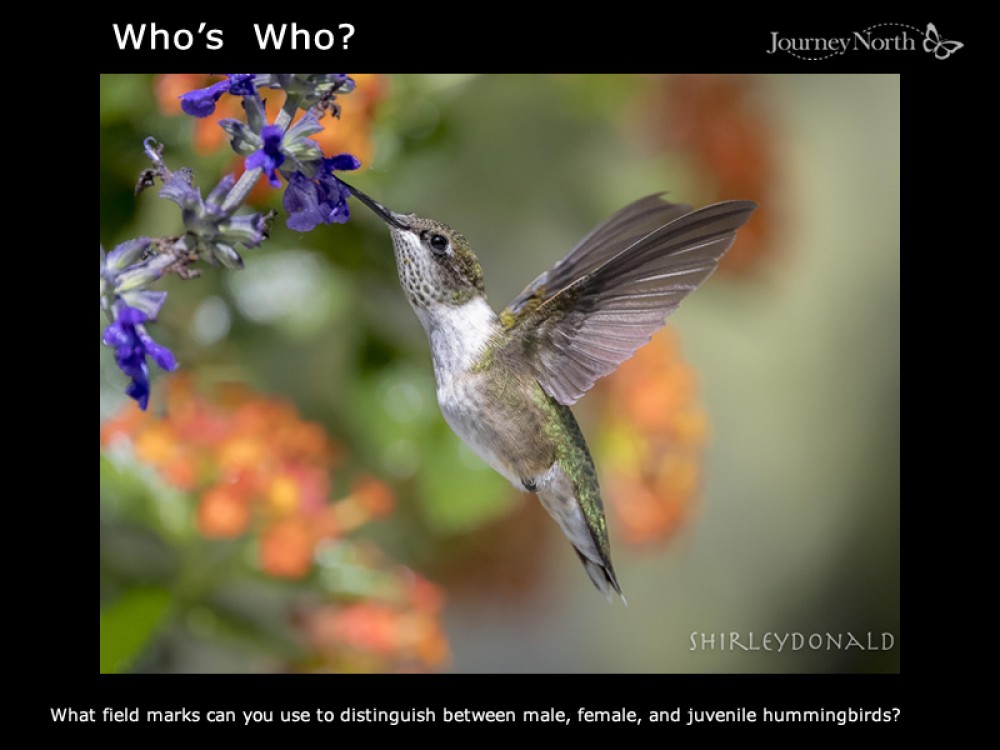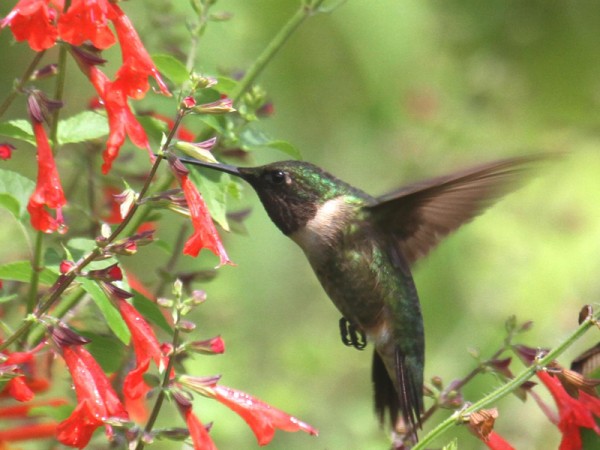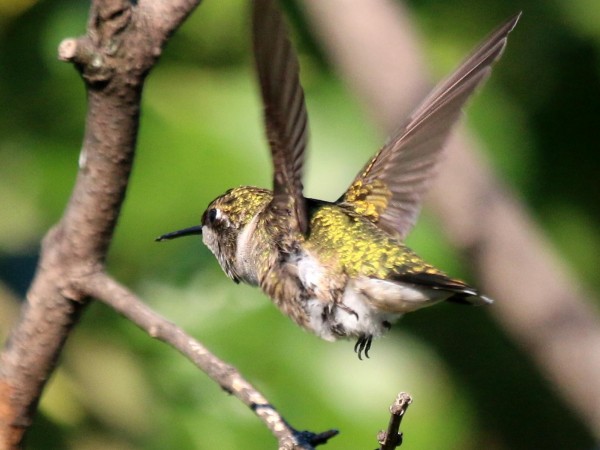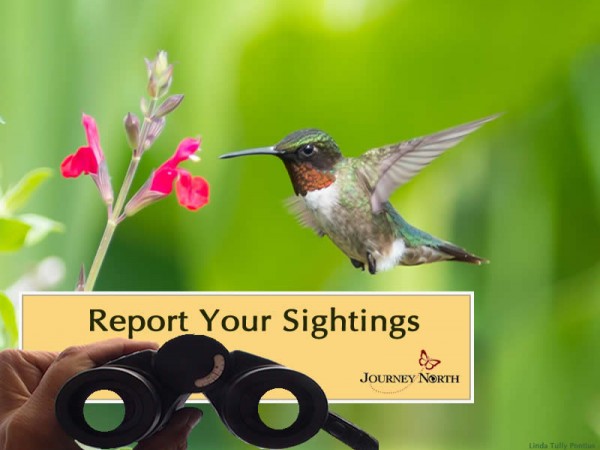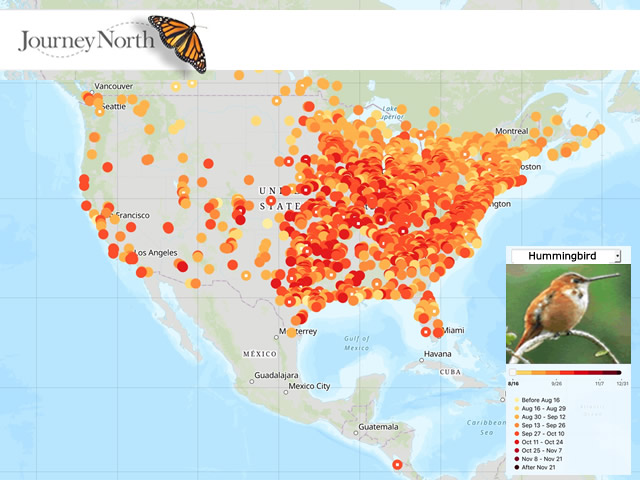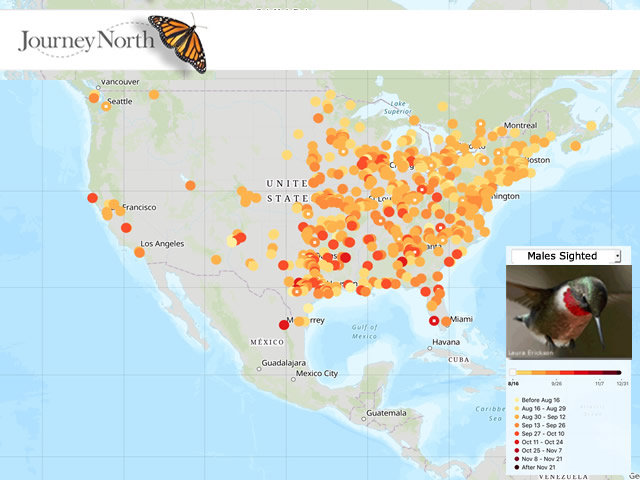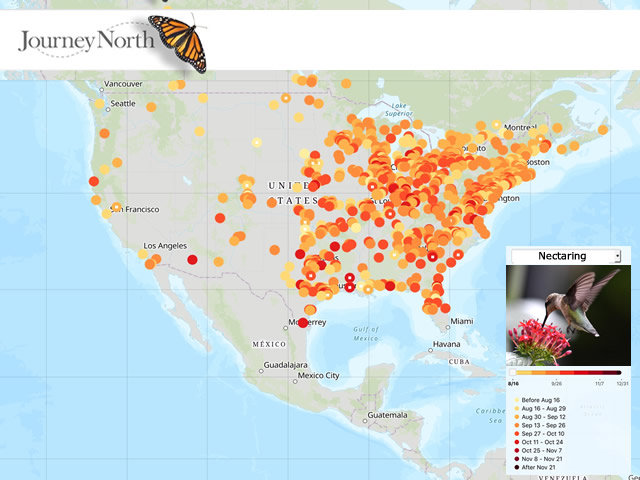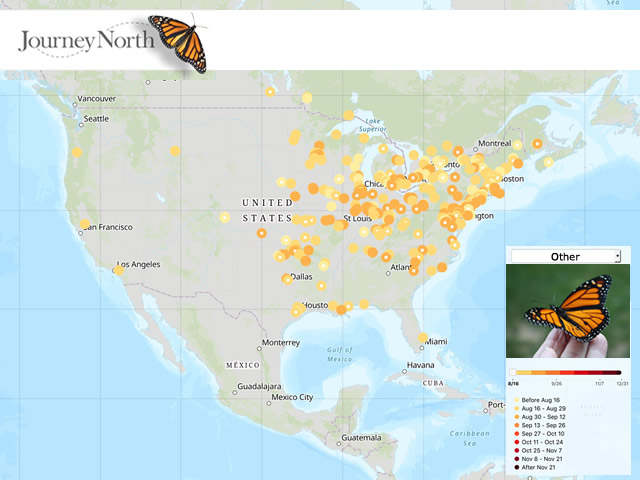The Fall Migration Season Is Upon Us
Hummingbirds are fueling up and heading south to wintering grounds. Help us to track their migration.
Time to Go!
Hummingbirds migrate by instinct. Fewer hours of daylight trigger hormonal changes that cause the urge to fuel up and fly south. In response to these seasonal changes, your backyard hummers will leave while nectar-rich flowers are still in bloom and feeders are full. Males leave first, as early as mid-July. Females follow, and then the juveniles who migrate for the first time all alone.
Dawn to Dusk
Watch hummingbirds go on a feeding frenzy before leaving the breeding grounds. They will feed often and intensely for days in a state called hyperphagia. Hummers start feeding as early as forty-five minutes before sunrise and keep eating until dusk. Fueled by the nectar, hummingbirds double their weight as they prepare to fly hundreds or even thousands of miles. Males leave first, as early as mid-July. Females follow, and then the young who migrate for the first time all alone.
Track the Migration
Join us as we track the migration of hummingbirds traveling to their wintering grounds. Citizen scientists across North America are observing seasonal changes and reporting hummingbird sightings.
- Adult Males: The first hummingbirds to head south are adult males. Look for the bright, bold colors of the male to distinguish from females and juveniles. Report males under the category: Fall: Hummingbird Sighting (Adult Male).
- Females and Juveniles: After the males have left, females and some will remain. Report females and juveniles under the category: Fall: Hummingbird Sighting.
- Nectaring at Flowers: Hummingbirds will nectaring almost non-stop to prepare for migration. Report hummingbirds under the category: Fall: Hummingbird, Nectaring from Flowers.
Fall Migration 2019
Report at least once per week as long as hummingbirds are present. Do not report when you no longer see them.

